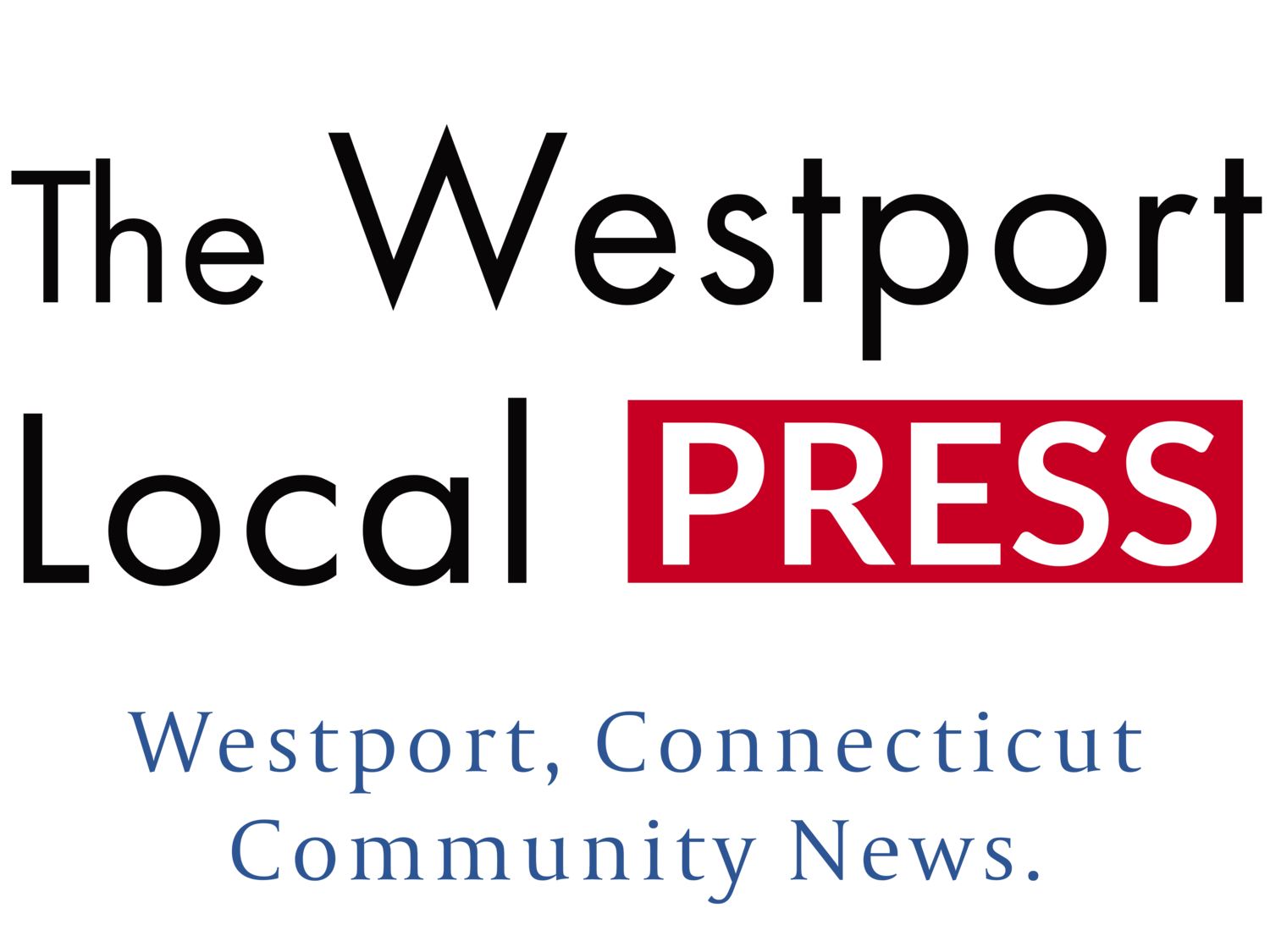Connecticut Attorney General Brought Cookies, Toured Gillespie Center Wednesday
L-R First Selectman Jim Marpe, Homes with Hope CEO Helen McAlinden, Connecticut Attorney General William Tong, and State Representative Jonathan Steinberg inside the Gillespie Center today discussing its functions during the COVID-19 crisis.
Connecticut’s Attorney General William Tong (D) brought a donation of food and toured the Homes with Hope Gillespie Center at 45 Jesup Road yesterday. The Attorney General was joined by First Selectman Jim Marpe, Homes with Hope CEO Helen McAlinden, Connecticut State Representative Jonathan Steinberg (D, 136th District), along with other Homes with Hope staff members. The group discussed the changes made to the emergency shelter due to COVID-19, and toured the center’s dormitories, kitchen, social room, and food pantry.
Ryan Soto, Gillespie Center Programs Director, described a decline in bed capacity from 21 beds to 12 beds due to COVID-19 spacing regulations and the addition of in-house COVID-19 testing done biweekly for guests. The local non-profit was excited to share their gratitude for the support of the community and Town through the pandemic, including meal donations from local restaurants and non-perishable food donations for the second floor food bank.
The Gillespie center offers meals, beds, laundry, and shower facilities for individuals in need. Homes with Hope also assists with social services such as occupational assistance and basic health needs, in addition to mentoring programs for those in crisis.
The Gillespie Center Food Pantry, located on the second floor of the 45 Jesup Road building.
Department of Public Works: Slow down, Understand Plow Protocols
From the Department of Public Works:
“Westport, CT - The Department of Public Works (DPW) reminds Westport residents to slow down and use extra caution when driving in winter conditions and particularly when they are near snowplows.
Here are some frequently asked questions about the Town snow plowing policy and procedures.
PLOW ROUTES – The streets are plowed and sanded in order of priority. Main (collector) roads are addressed first with special attention to steep hills and difficult intersections. Side streets are done next, then dead-end streets. A single pass will be made on side streets to keep them open, but primary emphasis will be placed on main roads until the storm has stopped. This may not seem fair to the residents of side streets or dead-end streets, but main roads must remain open.
BLOCKED DRIVEWAYS - All snowplows angle the same way – to the driver’s right. When going by they cannot avoid pushing the snow in front of a driveway. The homeowner is responsible for access to his driveway. The only way to avoid extra shoveling is to wait until DPW crews have completed their final clean up on the street.
FOLLOWING PLOWS - Never follow a plow too closely or attempt to pass one. Passing snowplows or driving aggressively can be dangerous for a number of reasons: Plow trucks weigh several tons and have many blind spots; snowplows cannot maneuver easily or stop quickly and by necessity drive slowly when clearing and treating roads; reduced speed allows salt to stay in travel lanes, limiting the amount that scatters off the road. This saves taxpayer money and minimizes environmental impacts.
Plowing can also create a cloud of snow around the truck that causes limited visibility and whiteout conditions for passing motorists. It also creates a ridge of snow between lanes that makes passing inadvisable. Motorists are reminded to stay several car lengths behind plow trucks.
SIDEWALKS – Per town ordinance, businesses are responsible for keeping all sidewalks along their property clear of snow and ice.
MAILBOX DAMAGE – The town repairs or replaces only mailboxes and/or posts that are struck by a plow blade. Usually a paint mark or tire tracks supply evidence of a mailbox strike. The town does not repair or replace mailboxes and/or posts that fall from the force of plowed snow. Mailboxes and supporting posts must be installed to withstand the rigors of snow removal, including the force of snow pushed from the street onto the roadside.
PRIVATE PLOWING – The town prohibits plow contractors from pushing snow from driveways or parking lots onto town streets. This practice is dangerous and impedes the town’s snow removal efforts. If there is no other alternative to pushing snow into the street, the plow driver must plow off the windrow left across the street by re-plowing until the road is safe. This may not necessarily mean bare pavement, but certainly it should be no worse than when the driver began work.
Residents who have questions may contact Public Works at (203) 341-1120.”
The State Department of Transportation is ready for snow as their fleet of snow plows sits idle their Post Road East yard this morning.

